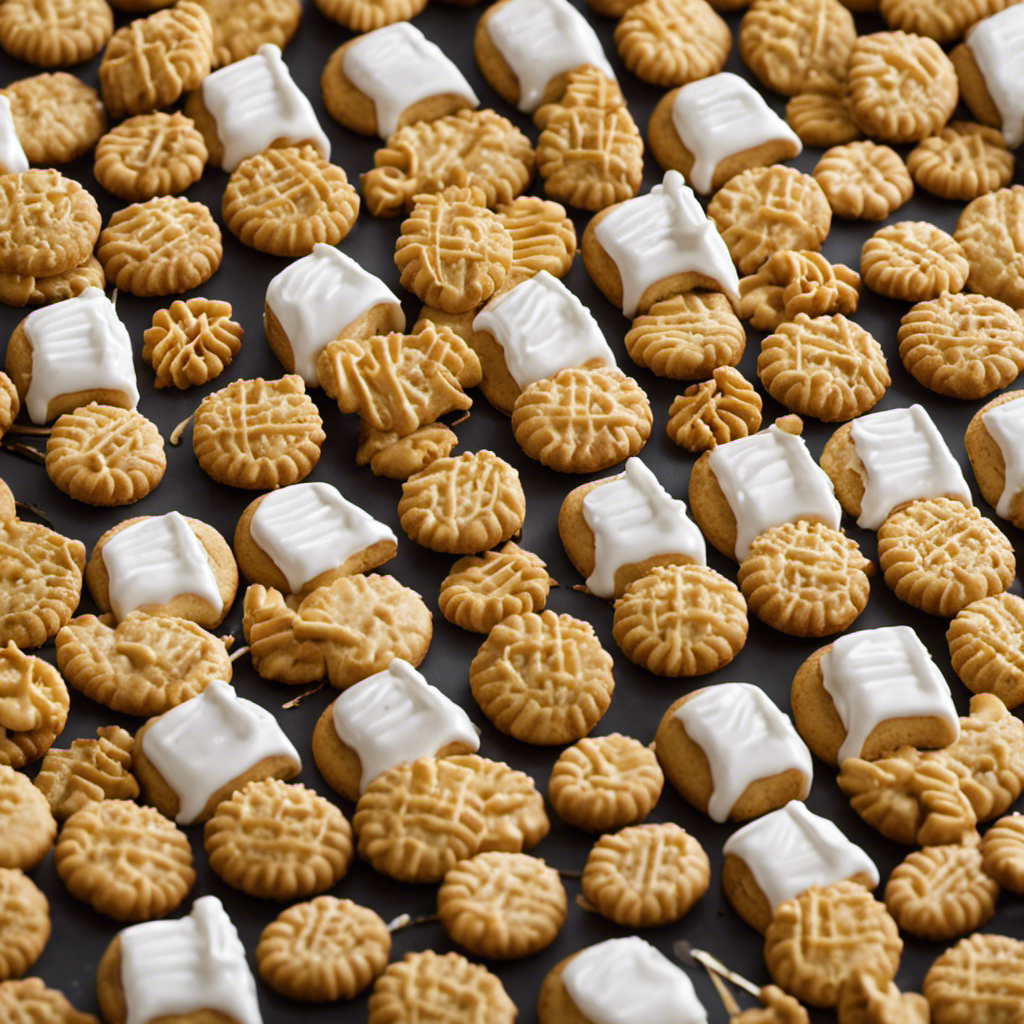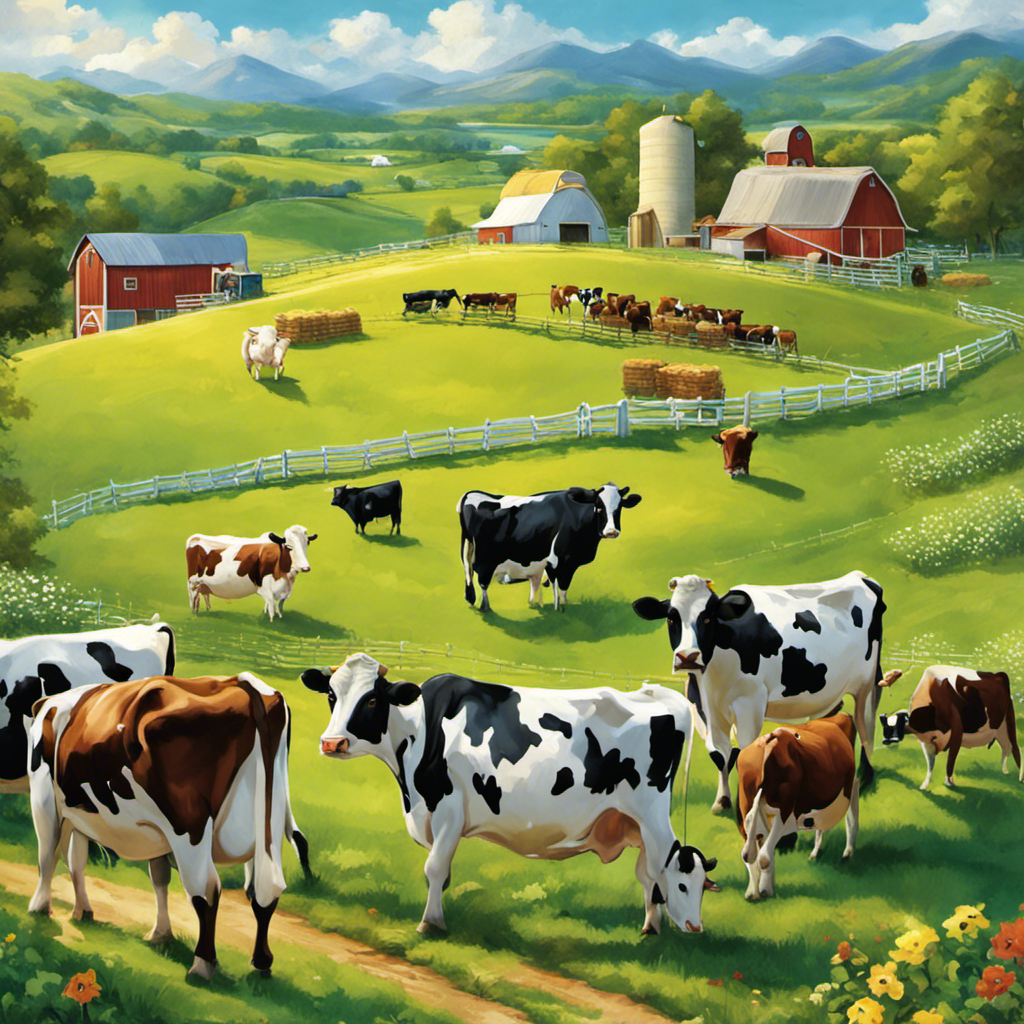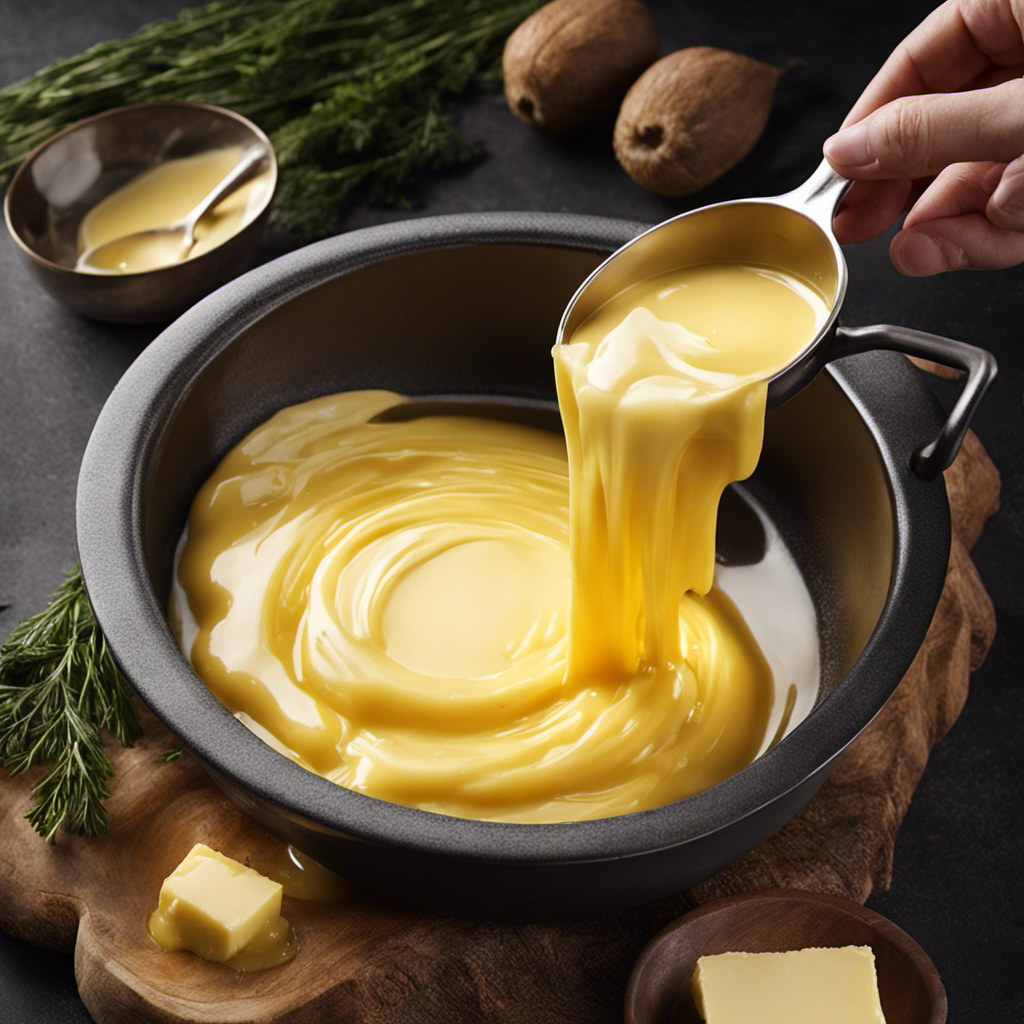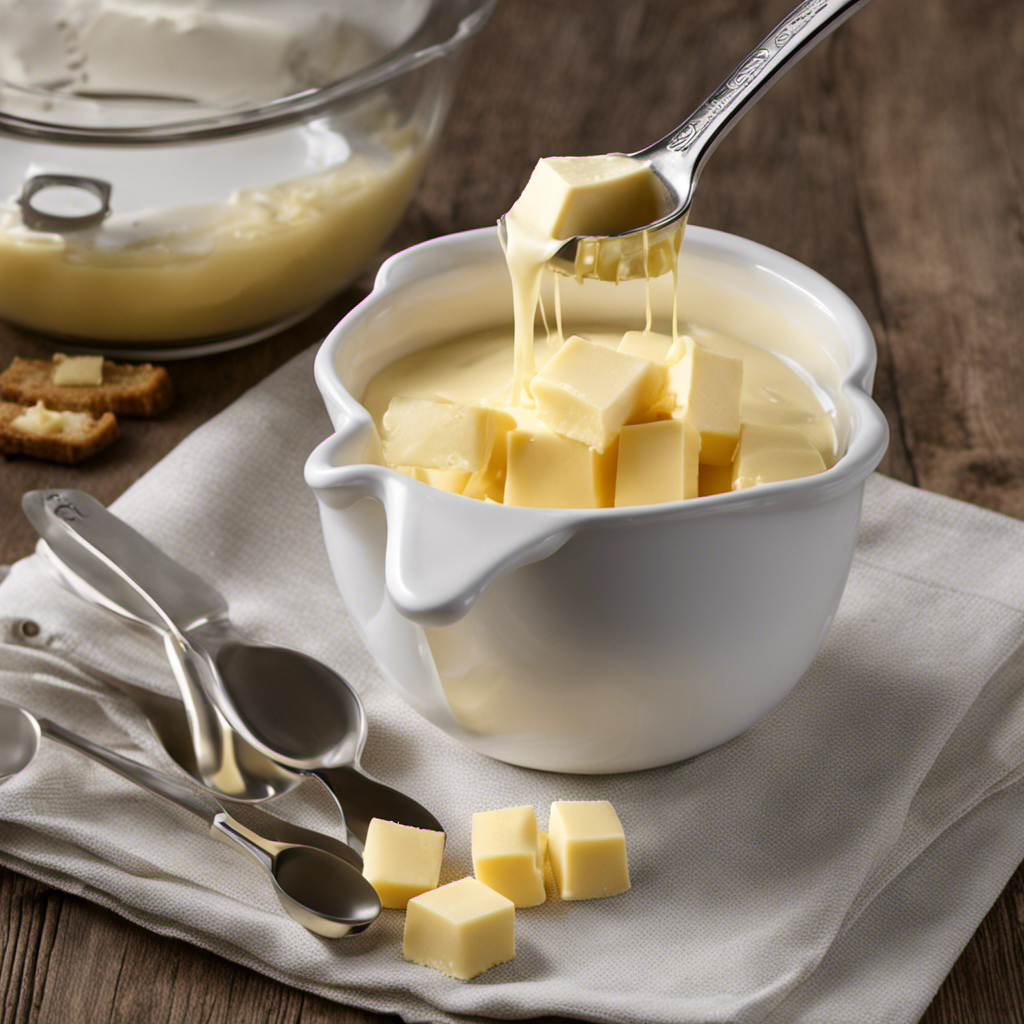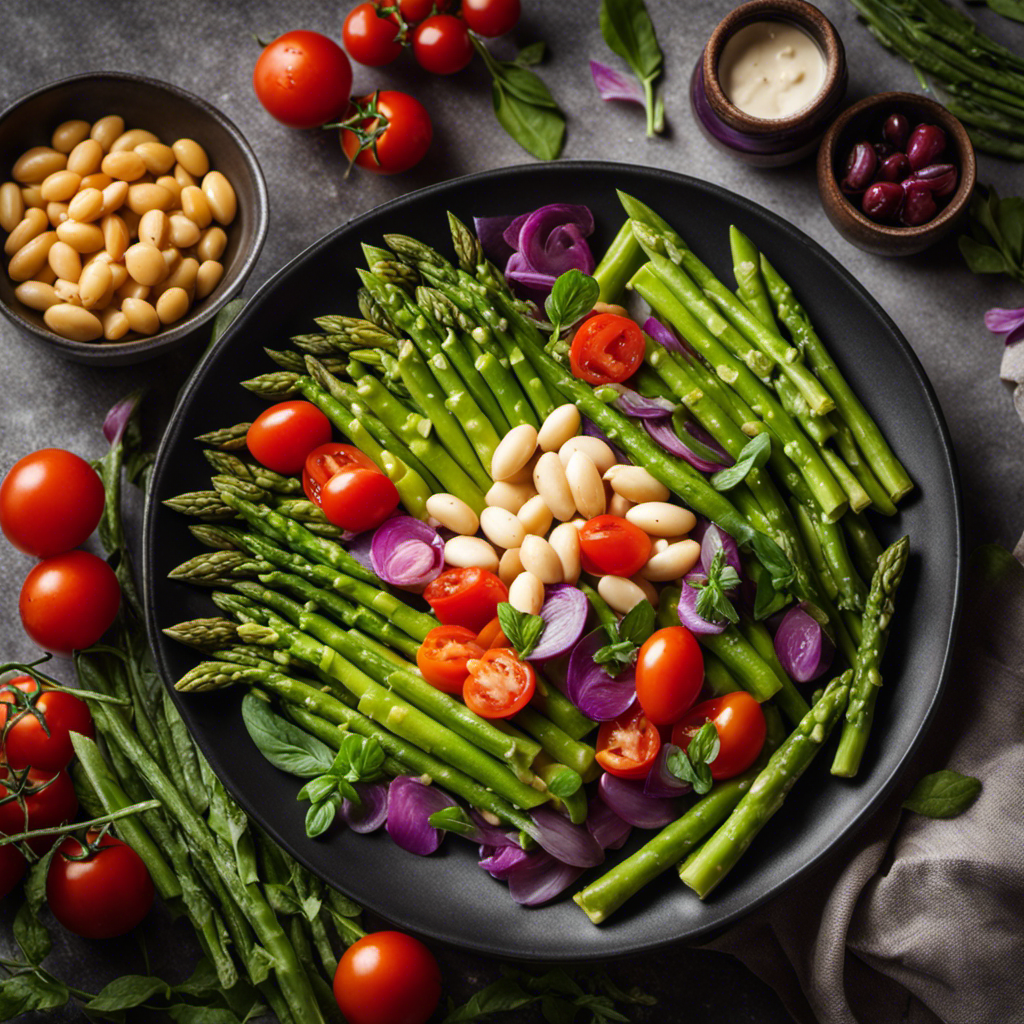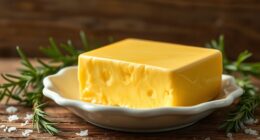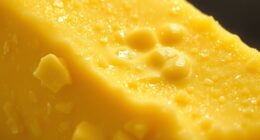As a fan of sugary delights, I’ve always been curious about the mastermind behind the delicious Nutter Butter cookies that never fail to satisfy my taste buds.
Well, my fellow cookie enthusiasts, prepare to have your curiosity satisfied. In this article, we will delve into the fascinating world of Nutter Butter cookies, exploring the history, ingredients, production process, and the people behind this irresistible snack.
So grab a glass of milk, sit back, and let’s unravel the mystery of who makes Nutter Butter cookies.
Key Takeaways
- Nutter Butter Cookies were introduced by Nabisco in 1969 and have become a beloved treat worldwide.
- The cookies are crafted to have a unique and delicious peanut butter flavor, which quickly grew in popularity.
- The main ingredients for Nutter Butter Cookies are peanuts, flour, sugar, and butter, with a peanut butter filling and crumbly texture.
- Nutter Butter Cookies have allergen concerns for those with peanut or gluten allergies, and strict protocols are followed to prevent cross-contamination during production.
The History of Nutter Butter Cookies
Nutter Butter cookies were first introduced in 1969 by Nabisco. They have since become a beloved treat for cookie enthusiasts around the world.
The origins of Nutter Butter cookies can be traced back to the desire for a unique and delicious peanut butter flavored cookie. The recipe was carefully crafted to ensure the perfect combination of peanut butter flavor and a crunchy texture.
The popularity of Nutter Butter cookies quickly grew as people discovered the irresistible taste and texture. The distinct shape of the cookie, resembling a peanut, further added to its appeal.
Today, Nutter Butter cookies continue to be a favorite snack for peanut butter lovers everywhere, and their popularity shows no signs of waning.
The Ingredients Used in Nutter Butter Cookies
When discussing the key ingredients used in Nutter Butter cookies, it is important to note the primary components that give these treats their distinct flavor and texture.
The main ingredients include peanuts, flour, sugar, and butter, which work together to create a rich and nutty taste.
Additionally, Nutter Butter cookies often contain unique additions such as peanut butter filling and a crumbly texture that adds to their overall appeal.
Lastly, when it comes to allergen concerns, Nutter Butter cookies may pose a risk for individuals with peanut or gluten allergies, as they contain both peanuts and wheat flour.
Key Cookie Ingredients
To make the delicious nutter butter cookies, you’ll need to gather a few key ingredients. Here are the essential components for creating these delectable treats:
-
Peanut Butter: A creamy and rich peanut butter is the star ingredient in nutter butter cookies. It provides a distinct nutty flavor and smooth texture.
-
Butter: Butter adds richness and helps create a tender cookie. Make sure to use unsalted butter for better control of the overall flavor.
-
Sugar: Granulated sugar is used to sweeten the cookies and gives them a delightful crispness.
-
Vanilla Extract: A small amount of vanilla extract enhances the flavor profile of the cookies, adding a subtle sweetness.
Once you have these key ingredients, you can begin the baking process. Mixing the dough, shaping it into the iconic peanut shape, and baking until golden brown will result in irresistible nutter butter cookies.
Enjoy!
Any Unique Additions
Adding a pinch of cinnamon or a sprinkle of sea salt can give these cookies a unique twist. When it comes to creating unique flavors and recipe variations, the possibilities are endless. For a burst of citrusy freshness, you can add some lemon zest to the cookie dough. If you’re craving something sweet with a kick, a dash of cayenne pepper can do the trick. For a subtle touch of sophistication, try folding in some finely chopped dark chocolate or adding a hint of espresso powder. Experimenting with different ingredients can elevate the taste and make your cookies stand out from the rest. So go ahead and get creative with your cookie recipes, and let your taste buds lead the way.
Now, let’s address the allergen concerns.
Allergen Concerns Addressed?
Are there any allergen concerns that need to be addressed? Absolutely.
When it comes to food products, allergen labeling and cross contamination risks are of utmost importance. As a consumer, it is crucial to have accurate and transparent information about potential allergens present in a product. Manufacturers must clearly label their products to ensure that individuals with allergies can make informed choices.
Cross contamination risks, on the other hand, refer to the unintentional transfer of allergens from one product to another during production or packaging. This can occur through shared equipment or facilities. To mitigate these risks, manufacturers must have stringent protocols in place to prevent cross contamination and ensure the safety of their products.
It is essential for consumers to be aware of these concerns and for manufacturers to prioritize allergen labeling and minimize cross contamination risks.
- Accurate and transparent allergen labeling
- Awareness of cross contamination risks
- Clear communication of potential allergens
- Strict protocols to prevent cross contamination
The Production Process of Nutter Butter Cookies
When it comes to the production process of Nutter Butter cookies, two key aspects to consider are the ingredients and recipe, as well as packaging and distribution.
The ingredients used in Nutter Butter cookies include peanut butter, sugar, flour, and various other additives. The recipe involves mixing these ingredients together, shaping the dough, and baking it to perfection.
Once the cookies are ready, they are packaged in individual packages or boxes and distributed to stores and consumers worldwide.
Ingredients and Recipe
To make nutter butter cookies, you’ll need peanut butter, sugar, butter, eggs, flour, baking soda, and vanilla extract.
First, preheat the oven to 350°F.
In a large mixing bowl, cream together the butter, sugar, and peanut butter until smooth.
Add the eggs one at a time, mixing well after each addition.
In a separate bowl, whisk together the flour and baking soda.
Gradually add the dry ingredients to the wet mixture, mixing until just combined.
Lastly, stir in the vanilla extract.
Drop spoonfuls of dough onto a lined baking sheet, and flatten each cookie with a fork, creating the signature crisscross pattern.
Bake for 10-12 minutes or until golden brown.
Let cool before enjoying.
- Peanut butter provides protein and healthy fats.
- Eggs add extra protein and help bind the ingredients together.
- Vanilla extract adds flavor and aroma.
- Different variations of nutter butter cookies can include adding chocolate chips, chopped nuts, or drizzling melted chocolate on top for added indulgence.
Packaging and Distribution
After carefully crafting the recipe and selecting the finest ingredients, the next step in the production of Nutter Butter cookies is packaging and distribution. As a key aspect of food safety and consumer protection, allergen labeling plays a vital role in the packaging design. To ensure transparency and assist individuals with allergies or dietary restrictions, our packaging prominently displays allergen information. This includes a clear and concise list of all potential allergens present in the product, such as peanuts, wheat, and soy. Additionally, our packaging design aims to capture attention and create a positive emotional response. Through vibrant colors, enticing images of the delicious cookies, and a user-friendly layout, we strive to engage and delight consumers from the moment they lay eyes on our product.
| Column 1 | Column 2 | Column 3 | Column 4 |
|---|---|---|---|
| Allergen | Peanuts | Wheat | Soy |
| Quantity | Present | Present | Present |
| Labeling | Prominent | Prominent | Prominent |
| Design | Vibrant | Enticing | User-friendly |
The Brand Behind Nutter Butter Cookies
The brand behind Nutter Butter cookies is known for its iconic peanut-shaped sandwich cookies. These delicious treats have been a favorite among cookie lovers for decades. But have you ever wondered about the origin of Nutter Butter cookies?
Well, let me enlighten you. Nutter Butter cookies were first introduced by Nabisco in 1969. They quickly gained popularity due to their unique shape and irresistible peanut butter flavor.
As for the nutritional value of Nutter Butter cookies, here are a few key points to consider:
- Each serving of Nutter Butter cookies contains approximately 140 calories.
- They are made with real peanut butter, which provides a good source of protein.
- Nutter Butter cookies are also a decent source of iron and calcium.
- However, it’s important to note that they are high in sugar and fat, so they should be enjoyed in moderation.
The People Involved in Making Nutter Butter Cookies
When you bite into a Nutter Butter cookie, you can taste the hard work and dedication of the people who craft these delicious treats. The manufacturing process of Nutter Butter cookies involves a team of skilled individuals who ensure that every cookie is made to perfection. Let’s take a closer look at the people involved in this process:
| Role | Responsibilities |
|---|---|
| Production Manager | Oversees the entire manufacturing process |
| Machine Operators | Operate the machinery that mixes and shapes the dough |
| Baking Technicians | Monitor the baking process to achieve the perfect texture |
| Quality Control | Inspect each cookie for consistency, taste, and appearance |
From the production manager who oversees the process to the quality control team who ensures the cookies meet the brand’s high standards, each person plays a crucial role. Their expertise and attention to detail ensure that Nutter Butter cookies are consistently delicious and satisfying. The dedication of these individuals is what makes each cookie a true delight.
The Quality Control of Nutter Butter Cookies
You play a vital role in ensuring the consistency, taste, and appearance of each cookie as part of the quality control team for Nutter Butter cookies. Our quality control process is rigorous and meticulous, ensuring that every batch of cookies meets the highest standards.
Here are the testing procedures we follow:
-
Visual inspection: We carefully examine each cookie for any visual defects, such as cracks or blemishes.
-
Texture analysis: We use specialized equipment to measure the texture of the cookies, ensuring they have the perfect crunch and chewiness.
-
Taste testing: A panel of trained tasters evaluates the flavor profile of the cookies, ensuring they have the signature Nutter Butter taste.
-
Shelf life testing: We conduct tests to determine the longevity of the cookies, ensuring they remain fresh and delicious for an extended period.
The Distribution of Nutter Butter Cookies
To ensure that Nutter Butter cookies reach their destinations in a timely manner, our distribution team utilizes efficient logistics strategies.
We carefully analyze the availability and demand for these delicious treats to ensure that we can meet the needs of our customers. Nutter Butter cookies come in a variety of popular flavors and variations, including the classic peanut butter flavor, chocolate-covered, and even limited edition holiday flavors.
Our distribution process involves careful inventory management and coordination with our production team to ensure that we have enough cookies to meet the demand. We also work closely with our shipping partners to optimize routes and minimize delivery times.
The Packaging of Nutter Butter Cookies
Our packaging team carefully selects materials and designs to ensure that Nutter Butter cookies are protected and presented beautifully. The packaging design plays a crucial role in preserving the cookies’ freshness and enhancing their visual appeal. Our team takes sustainability measures seriously, striving to minimize the environmental impact of our packaging.
Here are some key elements of our packaging design:
- We use sturdy and recyclable materials to protect the cookies during transportation and storage.
- Our packaging incorporates innovative techniques such as air-tight seals and moisture barriers to maintain the cookies’ crisp texture.
- Special attention is given to the design aesthetics, with vibrant colors and enticing imagery that grab the consumer’s attention.
- We also prioritize the use of eco-friendly inks and materials, ensuring that our packaging is as sustainable as possible.
The Global Reach of Nutter Butter Cookies
When traveling abroad, it’s common to find Nutter Butter cookies in various countries around the world. The popularity of Nutter Butter cookies has reached far and wide, making it a popular choice among cookie enthusiasts globally.
These delicious treats have become a staple in many cultures, with their unique blend of peanut butter flavor and signature peanut shape. The cultural significance of Nutter Butter cookies cannot be understated, as they have become a symbol of indulgence and comfort food for people of all ages.
Whether enjoyed as a snack or incorporated into desserts, Nutter Butter cookies have managed to transcend borders and bring joy to millions of people worldwide. So, no matter where you find yourself, the chances are high that you’ll be able to savor the buttery goodness of Nutter Butter cookies.
Frequently Asked Questions
What Is the Nutritional Information of Nutter Butter Cookies?
The nutritional information of Nutter Butter Cookies includes calories, fat, carbohydrates, protein, and sugar content. Allergen information may vary, so it is important to check the packaging for specific details.
Are Nutter Butter Cookies Suitable for People With Allergies or Dietary Restrictions?
As someone with dietary restrictions, I understand the importance of allergen-friendly options. When it comes to cookies, it’s essential to explore alternative recipes that cater to specific needs. Let’s delve into this topic further.
Can Nutter Butter Cookies Be Purchased in Bulk or Wholesale?
Nutter Butter cookies can be purchased in bulk or wholesale, making it convenient for large-scale events or businesses. The availability of bulk purchase ensures a steady supply of these delicious treats for any occasion.
Are There Any Variations or Flavors of Nutter Butter Cookies Available?
Are there any variations or flavors of Nutter Butter cookies available? Yes, Nutter Butter offers a variety of flavors and variations, including chocolate, peanut butter and jelly, and double nut. These options cater to different taste preferences and add excitement to the classic cookie.
Are There Any Plans to Expand the Nutter Butter Cookies Brand With New Products?
There are plans for expansion and new product development for the Nutter Butter Cookies brand. We are actively exploring opportunities to introduce variations and flavors to meet the evolving tastes of our consumers.
Conclusion
In conclusion, it’s clear that Nutter Butter cookies are a delectable treat enjoyed by people all over the world.
The intricate process of creating these cookies involves carefully selected ingredients and a meticulous production process.
The brand behind Nutter Butter cookies ensures that every cookie meets the highest standards of quality through rigorous quality control measures.
These cookies are then distributed globally, reaching the hands of cookie lovers far and wide.
The packaging of Nutter Butter cookies is designed to preserve their freshness and appeal.
Indulging in a Nutter Butter cookie is truly a delightful experience.
